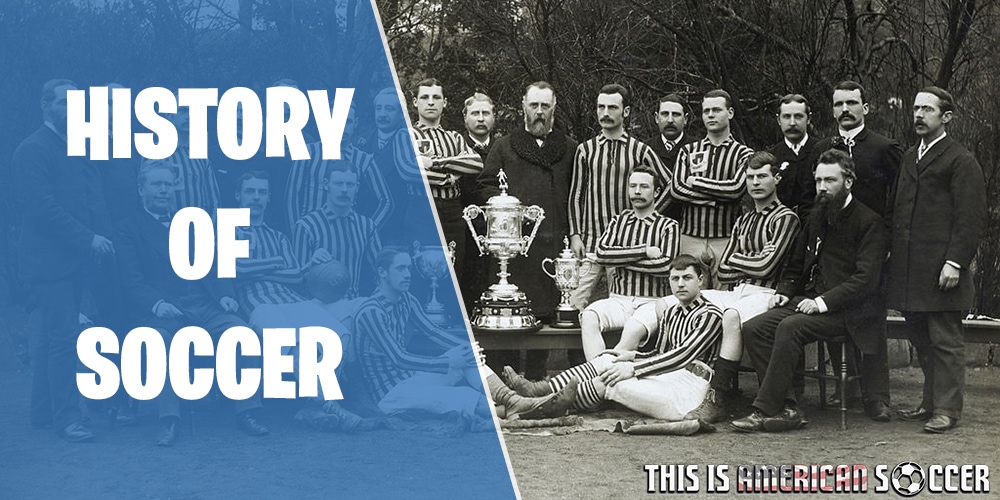A history of soccer, futsal and indoor football from ancient history to modern day soccer, the rules and relevant facts that have influenced and formed the game.
“Some people think that football is a matter of life and death. I don’t like that attitude, I can assure them it’s much more serious than that.” Bill Shankly (Liverpool FC manager).
Soccer as we know it is a beautiful game, one that involves camaraderie, skill and unbridled passion for the game, but has it always been that way?
Soccer has had an interesting and somewhat checkered past. It was said that Soccer (or football as it was known in it’s beginnings) was invented by the British kicking around the head of a decapitated Dutch prince after a victory in battle. This story is somewhat dubious, but the origins of the game are still soaked, literally, in blood, sweat and tears.
History of regular soccer
Ancient history of soccer
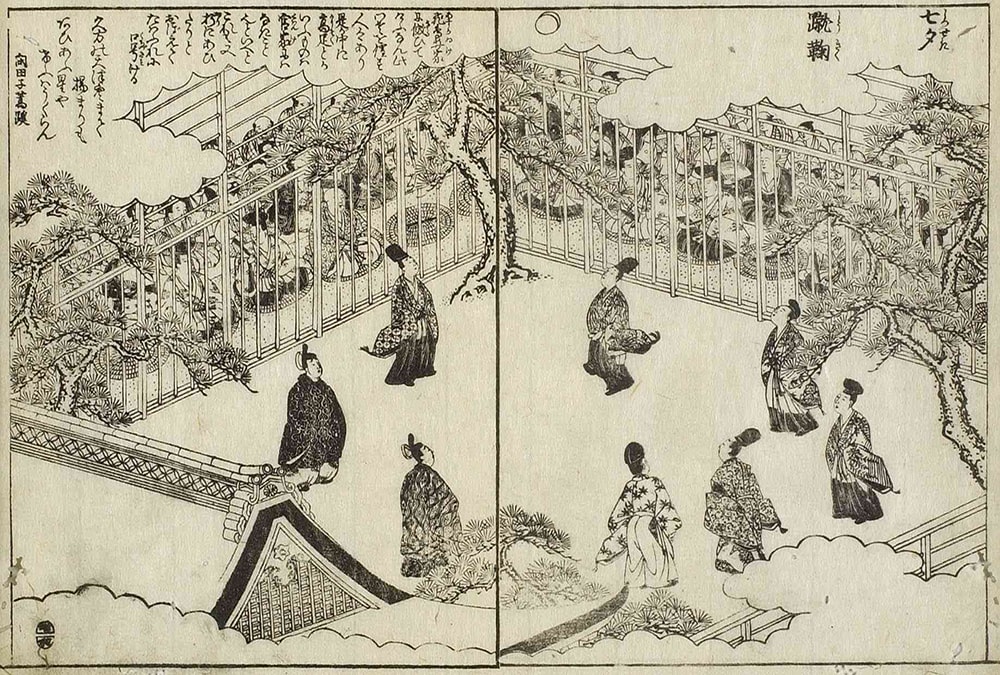
The game of soccer has a long and vibrant history, evidence of which can be traced as far back as the second and third centuries BC in China. Ball games similar to soccer where you could not touch the ball with your hands called Tsu’Chu were being played. A leather ball stuffed with fur was kicked through two bamboo poles, or posts. It was played by soldiers in China. The word Tsu’Chu actually refers to ‘kicking the ball’.
In 600 AD documents show that the Japanese also had a version of soccer whereby players tried to keep a ball off the ground for as long as they possibly could, more similar to modern day hacky sack, or keepie-uppie.
There is evidence of football (or a game with a ball that you use with your foot at any rate…) being played in ancient Greece, FIFA recognize Eposkyros as one of the earliest forms of football, although it was more akin to rugby or American football. It is documented that the Romans actually came up with the invention of air filled balls, although the game being played was more similar to volleyball.
Native Americans also had a game where two teams attempted to kick a ball across the opposition’s line. There are a number of references to this game, one of which tells of an English explorer named John Davis going ashore in Greenland and having a game of football with the Inuit. We have no idea who won.
Central America saw the introduction of football in the 1800s with a large influx of Europeans. It’s popularity increased exponentially due to the fact that soccer could be played by all socioeconomic classes. Some of the best players in the world emanated from Latin America, and their passion and nuance for the game is unquestionable.
In Mesoamerica the indigenous people took advantage of their natural supply of rubber to make rubber balls, although the ball game they were playing was more similar to basketball or volleyball.
The Australian continent had their own version of soccer too. In a book called The Aborigines of Victoria written in 1878 by Robert Brough-Smyth it is written that Aborigines were drop-kicking the skin of a possum in order for other players to catch it.
In England, Scotland and France folk football (a no holds barred game between bachelors and married men) was being played with origins as early as the 9th century.
The history of soccer can only be traced back as far as records and documents allow. It is evident that soccer, or versions of the ball game existed long before it was documented. It is not hard to imagine the glee on the face of some caveman as he takes the first kick of the bladder of the wild cattle he caught…and it bounces straight into his neighbor’s cave…GOAAAAALLLLLL!!!!
History of soccer in Medieval/Early modern Europe
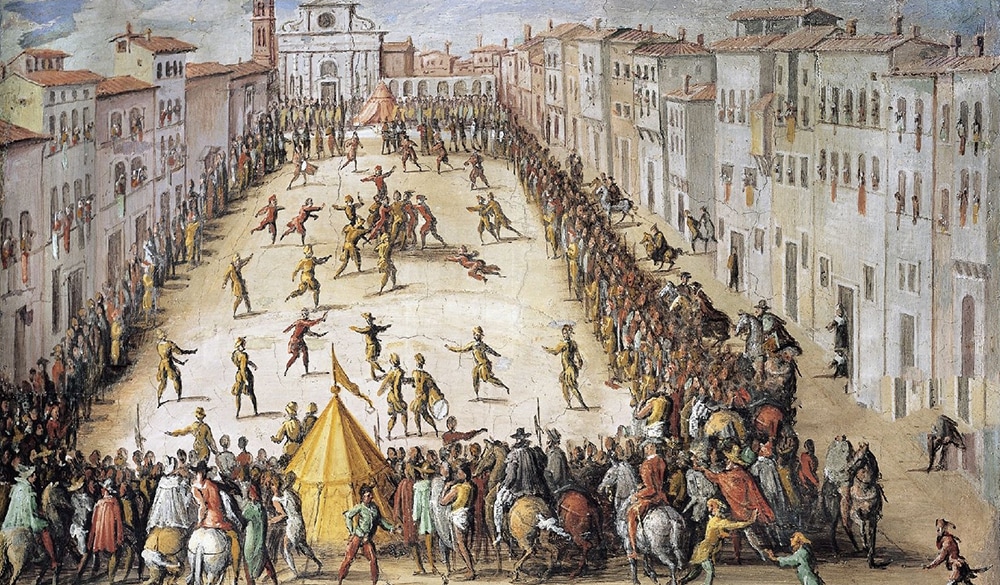
The game of soccer as we know it started to gain notoriety, and even infamy in Europe and particularly England in the 9th century. Unlimited amounts of players from different towns and villages would come together on religious festivals and play against each other, although there is no direct reference to the ball actually being kicked rather than ‘ball play’.
During this period a lot of the information gleaned is the documentation of injuries inflicted while playing the game. There are reports of a man being accidentally stabbed during a game, and many other reports of injury and even death.
Soccer was promptly banned in England by the Lord Mayor of the City of London, Nicholas de Farndone in 1314. Football was seen as a sport where many evils could arise which God forbid. Playing the game was punishable by imprisonment. This is one of the the earliest references to the actual word, football.
Further evidence shows that King Edward III released a proclamation banning soccer, handball and any other ‘vain games of no value’.
Throughout the middle ages and even into modern day in England and Scotland many attempts have been made to ban the game of soccer. In fact women were banned from playing soccer in English and Scottish leagues for a large part of the 19th century. The ban started 1921. This ban was only lifted in the 1970s.
The birth of organized soccer
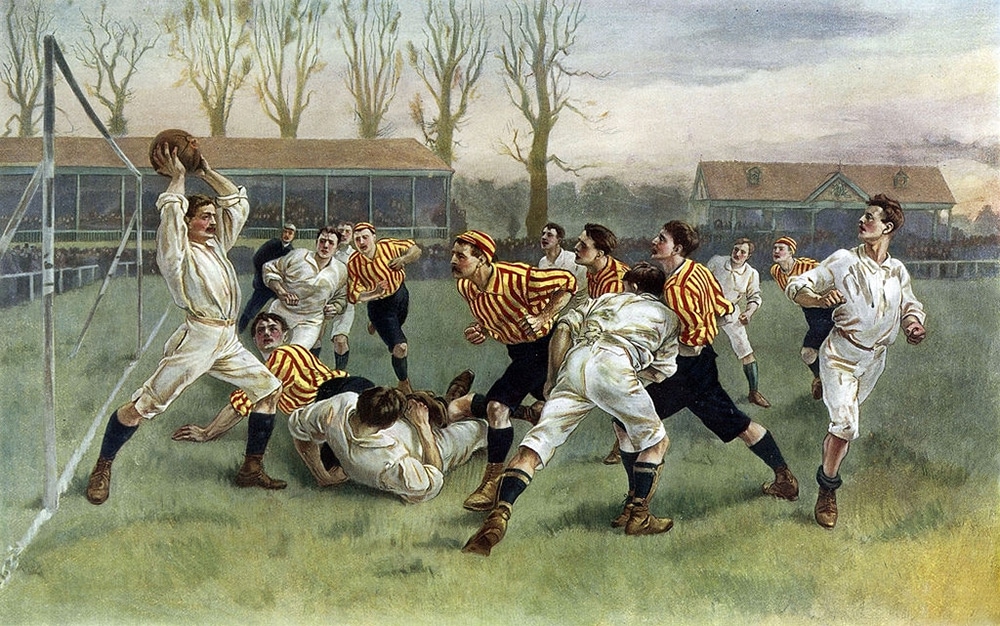
The major transition from mob sport to the semblance of an organized soccer game occurred in private schools such as Eaton in England where soccer (or football as it was then known), was used to maintain fitness and a competitive spirit between the players. Early references of a set of rules handed down from player to player date back as far as the 1500s. The offside rule was introduced in the 1800s although different schools had different versions of the rule.
Until the late 1800s and the early 19th century soccer was only played in England by private school children, as the average person worked a 12 hour day 6 days a week, this included children, who had no desire to play sport after a heavy working day. Such heavy child labor was abolished in 1850 increasing recreation time, and thus, the game of soccer started gaining popularity within the working classes.
In the USA in the 1820s soccer also became popular in educational institutions in Northeastern universities. Soccer was being played in faculties such as Princeton, Harvard and Amherst and Brown.
In 1855 the U.S inventor Charles Goodyear who patented vulcanized rubber invented soccer balls. Before his invention teams would use an inflated pigs bladder, with a shape more akin to a rugby ball or that used in American football.
In 1848 in England the Cambridge Rules came into play, and are recognized as the first set of rules to have influenced modern soccer rules as we know them today whereby the style of rugby football, carrying the ball or using your hands during a game was banned.
Sheffield football club which is hailed as the first football club in England had their own set of rules, and were played independently of educational institutions. Sheffield rules also played a large role in the foundation of the football association and the game we know today. Throw-ins, corner kicks, and free kicks are all derived from Sheffield rules.
During the 1860s large attempts were being made to standardize the rules of the game through one soccer association, and by the early 20s the necessity of an overseeing body and code became predominant.
In 1871 the first FA cup was held at the Kennington Oval in England.
In 1884 The American Football Association came into fruition, uniting the East in one set of rules to maintain the standards of interpretation and uniformity to the rules of Soccer.
In 1855 the first ever international game played outside of Britain took place in Newark between Canada and the U.S. Canada were the victors in a 1-0 result.
The 19th Century saw the birth of modern soccer as we know it. In 1900 soccer was played at the Olympics (see also ‘Is Soccer An Olympic Sport?‘) for the first time.
In 1904 FIFA was born. As Britain was making no headway at all in standardizing soccer, Europe stepped in with an association made of 7 European countries (Belgium, The Netherlands, Denmark, France, Spain, Sweden and Switzerland.) A meeting was held between these countries in Paris, France, and the The Fédération Internationale de Football Association (FIFA) came to be. It remains the largest and most well known governing body in the history of soccer.
In 1914 The governing body for U.S. football , the U.S. Football Association (USFA) which was later renamed the U.S Soccer Football Association (USSFA) was granted full membership to FIFA.
In 1930 FIFA held it’s first World Cup tournament in Montevideo, Uruguay. 13 teams participated including the U.S. In the final Uruguay won over Argentina by 4-2. The U.S. finished 3rd.
In 1932 soccer was taken off the Olympic program in Los Angeles over the expense of travel from many of the strong competing countries to travel to the U.S.
1991 saw the first big win in soccer by the U.S. women’s team who won in China at the The inaugural Women’s World Cup.
In 1996 the U.S. women’s team went on to win the first ever women’s soccer event at the Olympics.
Women in soccer

Documents show that as long as soccer, or what we now deem as soccer has been just as popular with women as men, the first reference to women in soccer comes as early as 200 CE in China, where a depiction shows two women playing with what looks like a leather ball.
There are not many references of women playing soccer throughout history, but this does not mean that it was not being played. There is a reference in the 1200’s of women playing a soccer game alongside of their husbands in France, and annual women’s competitions being held in Scotland.
Men were always against women playing soccer, and even after rules and codes came into play, men objected because they deemed that soccer was too violent for women to partake in.
The 1800s regulations against violence in soccer opened an opportunity for women to participate more freely games. One women’s match in 1853 drew 53,000 spectators. However, the press, and the world of men’s soccer were always highly derogatory with regard to female soccer players and games.
So in 1921 with damaged egos, the English football association, driven primarily by men banned women from playing on their pitches, a ban that was only lifted in 1971.
Due to the fact that women had missed out on nearly a century of practice as it were, women were still faced with the stigma that they could not play as well as men. However, women’s games are drawing a very good audience nowadays, with huge endorsements. Some of the women’s teams are bringing a lot of good, skilled players to fruition. The U.S. women’s team particularly having huge success in international soccer.
In 2019 Budweiser became the official partners of the English Women’s senior soccer team for the 2019 FIFA women’s world cup. The endorsement stirs national pride, using the famous Queen Elizabeth I ‘Heart and Stomach of a King’ speech to poignant, hair raising effect to promote the team.
Women’s soccer continues to rise in fame and popularity.
History of futsal

Futsal was invented in Uruguay so that the street kids could play in a safer environment. They often didn’t have access to a soccer field and playing in the streets caused many an injury and bloody knee.
The word futsal derives from the Spanish for fútbol sala or fútbol de salón and from Portuguese futebol de salão the translation of which is room football, or indoor football, although it should not be confused with indoor soccer.
In 1930 a guy (Juan Carlos Ceriani) decided enough was enough, spurred on by Uruguay’s gold cup win that year, and the fact that he didn’t want the kids in the local community going around with broken arms covered in band-aids.
He took the initiative and organized the first ever youth soccer tournament which could be played on a basketball court. It’s popularity in Central America escalated from there. The implications of playing on an indoor court are that players could carry on training in winter months and keep in shape all year round.
Brazil became the dominant team in South America, later maintaining their success in the Pan American tournaments. Of the 6 South American cups (Pre-Pan American tournaments,) Brazil took home a win…every time.
This is true also for Women’s futsal world tournaments, with the women of Brazil dominating 6 out of 6.
History of futsal in the U.S.
U.S. futsal was founded in 1981, long after it’s invention, but has steadily increased in popularity over the years. There are three important governing bodies in futsal. The Asociación Mundial de Fútsal (AMF), FIFA and U.S. Soccer, the regulating body for the U.S.
The U.S. is represented in futsal by the United States National Futsal team at international level. After being founded in 1981, their first big match was in 1984 in Canada, the US won 6 -5.
The first international futsal match in the U.S. took place in December, 1985. The U.S. played against Australia who they defeated 9-5.
The golden era in U.S. futsal was the late 80’s and early 90’s, when the U.S. took 3rd place in the FIFA Futsal word championships, and 2nd place in 1992.
After that, the U.S. have dropped, and in more recent years they have failed to qualify at all.
History of futsal in Europe
The first futsal match in Europe was played in Spain, who have gone on to dominate, winning 7 of the 11 UEFA (Union of European Football Associations) Futsal championships, although Portugal managed to pip them to the post in the last championship in 2018.
History of indoor soccer in the U.S. and Canada
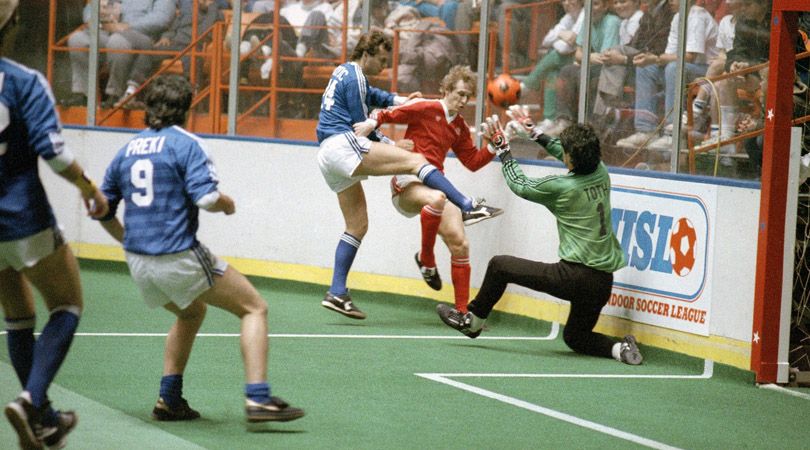
Indoor soccer is an indoor game played on turf with 6 players per team over 60 minutes.
The origins of indoor soccer can be traced back to well over a century, and was popular in many countries, it really gained popularity though in the 70’s and became an internationally recognized sport when the U.S. started taking an interest. In 1971 the American Soccer League organized some exhibition tournaments.
1974 was the big one though, when the first match was aired between the North American Soccer League and the Soviet Red Army. It took place at the Philadelphia Spectrum, an indoor ice hockey rink covered in AstroTurf.
The U.S. soccer team (The Atoms) played strong during the first half defending a draw at 3-3…but were dominated in the second half of the game by the Soviets. (This was during the cold war, when the two countries were not best of friends, so the level of competitiveness was particularly high).
Despite their loss, the ‘big bang’ of indoor soccer can be attributed to just 6 Atoms who caused enough friction against the Soviets to create an explosion that sent ripples across the U.S. and Canada.
Indoor soccer is particularly prevalent in Canada and colder parts of the U.S. due to the adverse weather conditions preventing outdoor games, and the fact that an ice hockey rink or arena is easily converted into a field.
Frequently asked questions
Who is the best soccer player in history?
Lionel Messi is hailed as the Number 1 player in history having won the Ballon d’Or five times until now. However, if you ask fans, Diego Maradona and Pelé’s names will definitely be on people’s lips.
Who scored the first goal in soccer history?
Debatable, but the first goal ever scored in the FIFA world cup was Lucien Laurent of France in 1930.
Who has the most goals in soccer history?
According to the Guinness Book of World Records Edson Arantes do Nascimento (Brazilian) scored 1,279 goals. He is better known and fondly loved by the soccer world as Pelé.
Who has the most hat tricks in soccer history?
Three time world cup winner Pelé, with 97 hat tricks in his career.
What is the fastest goal in soccer history?
Nawaf Al-Abed (Saudi Arabian) kicked the ball directly into the net from the half way line just 2.4 seconds after the match started.
What is the highest score in soccer history?
AS Adema 149–0 SO l’Emyrne, 2012. (Two teams playing in Madagascar, SO l’Emyrne threw the game in protest).
Who has the most assists in soccer history?
Records only began in 1990, but Lionel Messi is accredited with the most assists, with a total of 192.
Who has the most red cards in soccer history?
Gerardo Bedoya (Colombia) with 46 red cards. 20 more than any other of his his rule-breaking partners in crime.
Who has the most trophies in soccer history?
Dani Alves (Brazilian) who played for several teams, (Barcelona, Juventus, PSG and Sau Paulo) won 42 trophies in his career.
Looking for related or relevant sources?
Below you find a list with all the relevant or related sources we’ve used:
- https://en.wikipedia.org/wiki/Football
- https://en.wikipedia.org/wiki/History_of_soccer_in_the_United_States
- https://www.englisch-hilfen.de/en/words/football_soccer1.htm
- https://www.thefa.com/womens-girls-football/history
- https://www.thedrum.com/news/2019/06/07/budweiser-invokes-the-spirit-queen-elizabeth-i-make-english-lionesses-roar
- https://en.wikipedia.org/wiki/History_of_the_FA_Cup
- https://en.wikipedia.org/wiki/List_of_footballers_with_500_or_more_goals
- https://the18.com/en/soccer-entertainment/players-most-career-hat-tricks-soccer-history
- https://en.wikipedia.org/wiki/AS_Adema_149%E2%80%930_SO_l%27Emyrne
- https://www.sportskeeda.com/football/10-players-red-cards-football-history-ramos-pochettino
- https://www.givemesport.com/1640697-ronaldo-messi-dani-alves-who-has-won-most-trophies-in-football-history

